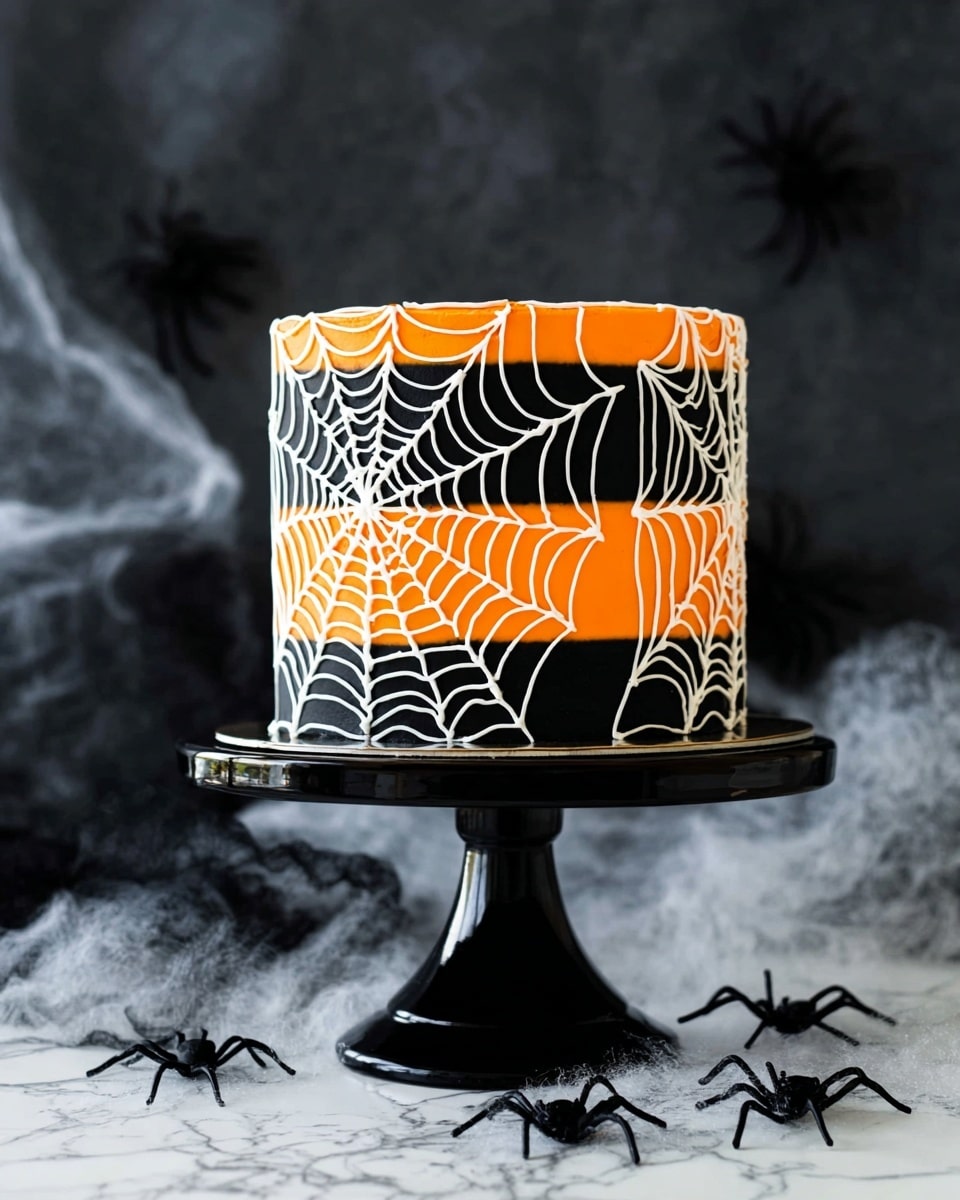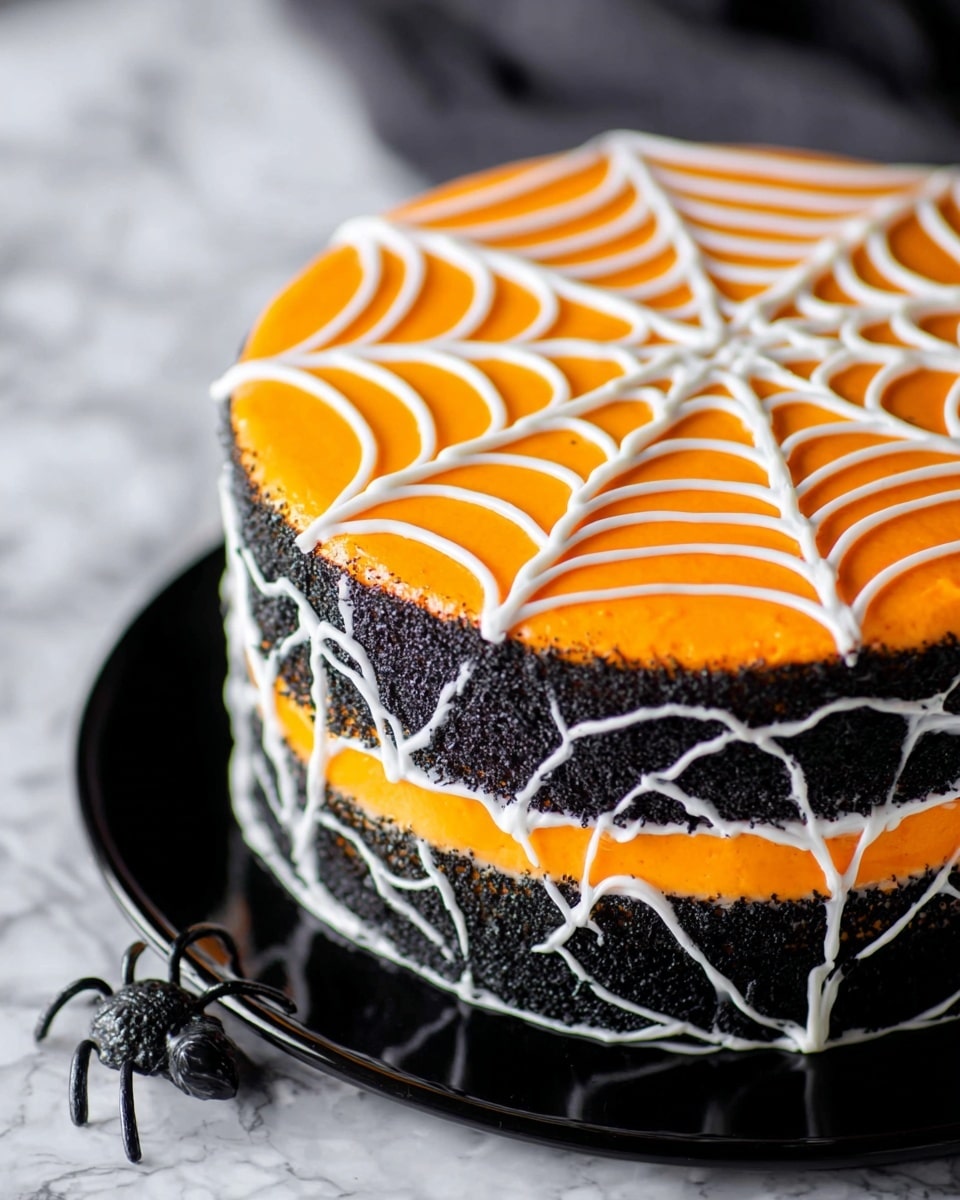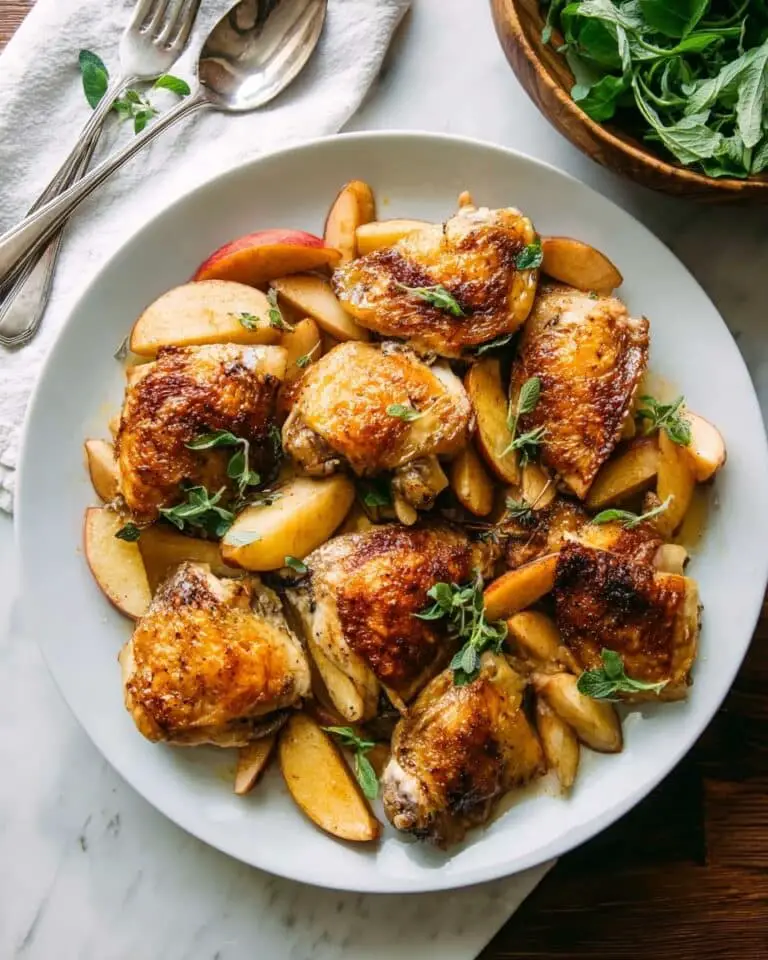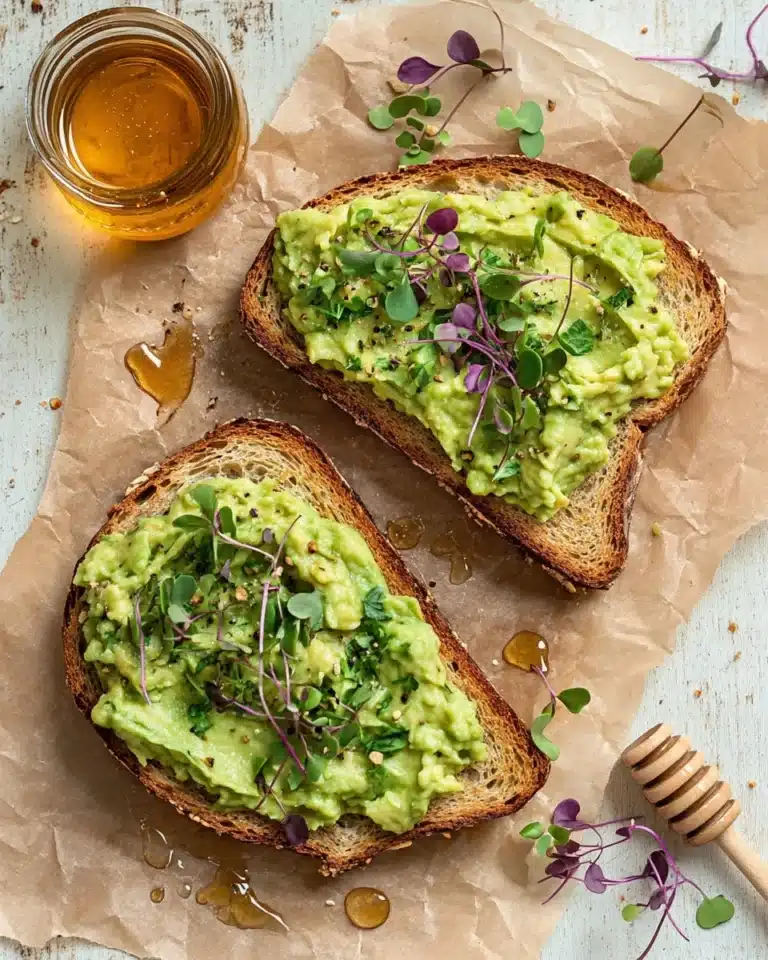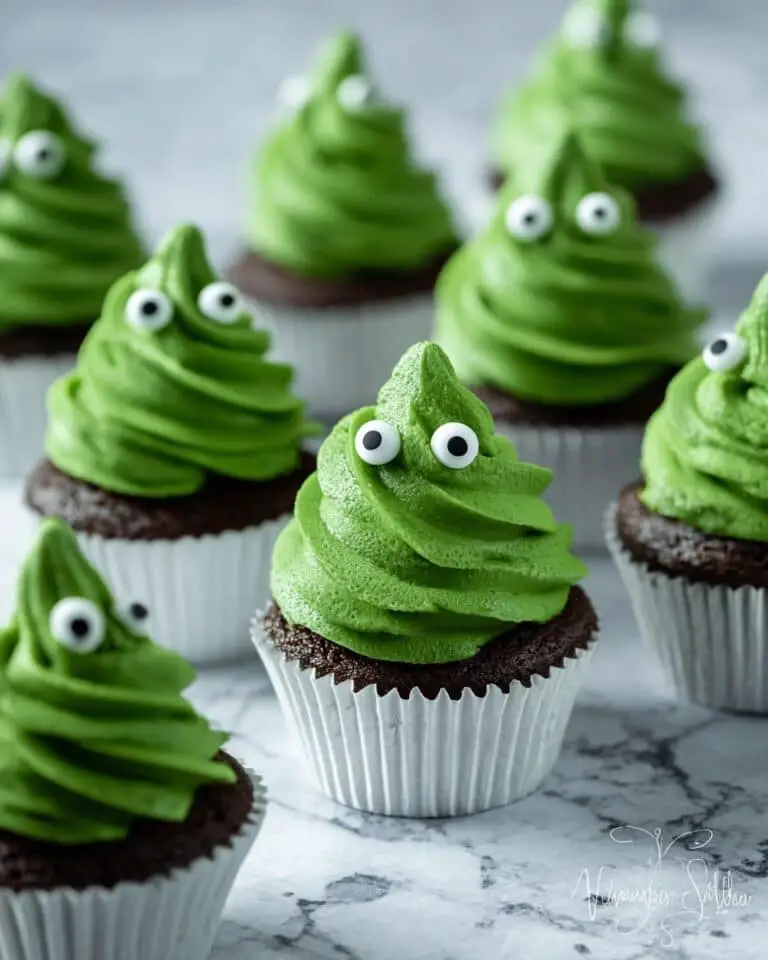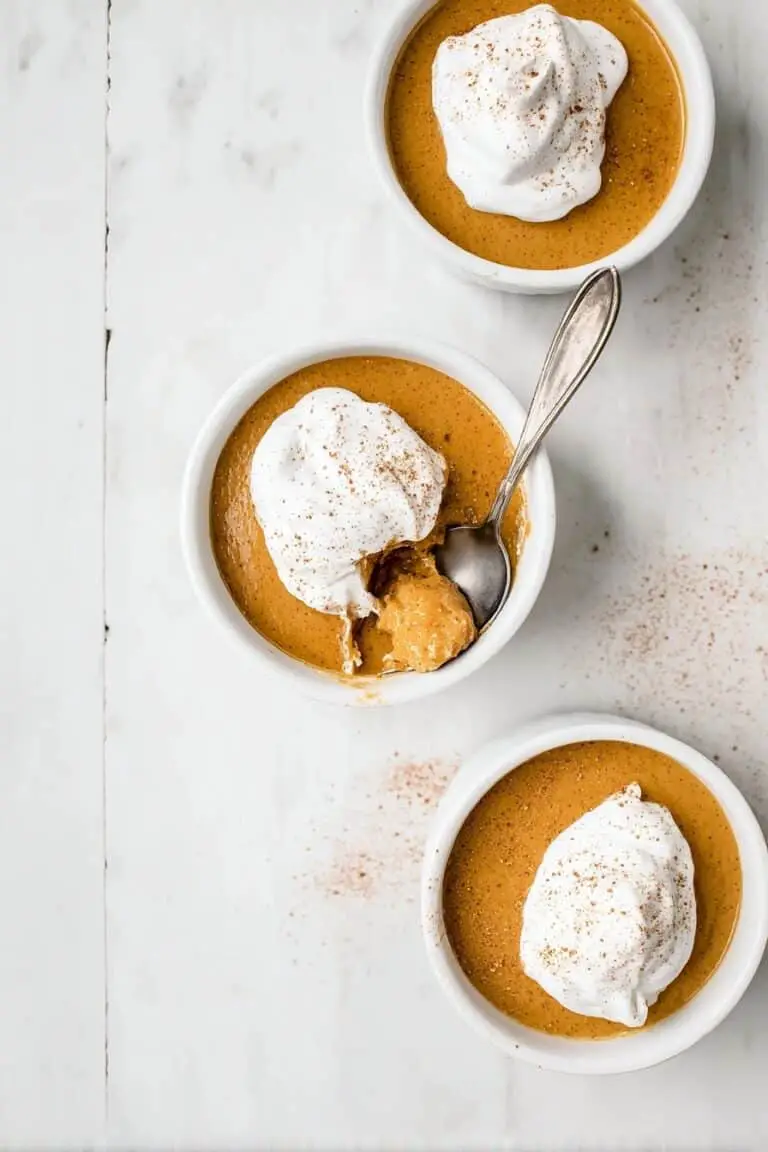If you’re on the hunt for a show-stopping dessert that’ll wow everyone at your next party, you’ve got to try this Spiderweb Cake Recipe. It’s not just any cake—this one combines a dramatic black cocoa base with a vibrant orange-flavored buttercream that creates the perfect Halloween vibe or any spooky occasion. I absolutely love how this turns out every time, and I promise once you see that spiderweb pattern come to life, you’ll be hooked. Stick with me, and I’ll walk you through every detail to make sure your cake ends up looking and tasting fantastic.
Why You’ll Love This Recipe
- Rich and Moist Cake: The blend of black and Dutch-processed cocoa powder gives this cake an intense chocolate flavor with a moist, tender crumb.
- Vibrant Orange Buttercream: Adding orange extract and the gel color creates a stunning contrast and a zesty twist that really makes the spiderweb theme pop!
- Fun and Impressively Spooky Design: The spiderweb frosting effect is easier than you think and will have everyone asking how you did it.
- Perfect for Celebrations: Whether it’s Halloween or a themed party, this cake doubles as a delicious treat and a conversation starter.
Ingredients You’ll Need
Each ingredient here plays a key role in balancing flavor and texture. From the cocoa powders to the coffee, everything blends to bring out a deep chocolate richness, while the orange flavor in the frosting brightens it up beautifully.
- All-purpose flour: This forms the cake’s structure; be sure to measure properly for the best texture.
- Granulated sugar: Sweetens the cake, and balances the bitterness of cocoa.
- Black cocoa powder: Essential for the deep black color and bold chocolate flavor.
- Dutch-processed cocoa powder: Adds complexity and smoothness to the cake’s chocolate taste.
- Baking soda and baking powder: These leavening agents help the cake rise perfectly.
- Salt: Enhances all the flavors and balances sweetness.
- Vegetable oil: Keeps the cake incredibly moist and tender.
- Buttermilk: Adds tanginess and reacts with baking soda for lift.
- Strong brewed coffee (or hot water): Enhances the chocolate notes without imparting a coffee flavor if you’re not a fan.
- Large eggs: Provide structure and richness.
- Vanilla extract: Deepens the flavor profile.
- Unsalted butter (room temperature): The base for luscious frosting, so make sure it’s soft for easy mixing.
- Powdered sugar: Sweetens the frosting and helps achieve that silky texture.
- Heavy whipping cream: Adds creaminess and smoothness to the buttercream.
- Orange extract: This little addition gives the frosting its signature zing.
- Electric Orange Americolor Gel Color (optional): For a bright, vivid color that makes the spiderweb effect really stand out.
- Shortening: Helps stabilize the frosting and gives it a nice spreadable consistency.
- Clear vanilla extract (optional): I recommend this over regular vanilla to keep frosting color bright.
- Milk (as needed): Use it to thin frosting to just the right consistency.
Variations
I love tweaking this Spiderweb Cake Recipe depending on the occasion, and you should definitely make it your own. Whether it’s adding a twist with different flavors or adapting it for diets, these little changes make the cake your own masterpiece.
- Chocolate Lovers’ Delight: I once added a thin layer of chocolate ganache beneath the frosting just to amp up the chocolate punch – it’s heavenly!
- Orange-Zest Freshness: For extra zing, I sometimes add freshly grated orange zest directly into the buttercream.
- Dairy-Free Option: Swap buttermilk and butter for dairy-free alternatives like almond milk mixed with a bit of vinegar and vegan butter, and your frosting can use vegetable shortening entirely.
- Seasonal Spins: You can change up the gel colors and extracts to create different themed spiderweb cakes—cranberry and cinnamon for fall or lavender and lemon for spring.
How to Make Spiderweb Cake Recipe
Step 1: Mix Your Dry Ingredients Carefully
Start by sifting together all your dry ingredients: the flours, granulated sugar, black and Dutch-processed cocoa powders, baking soda, baking powder, and salt. Sifting helps avoid lumps and ensures the cocoa powders blend evenly—a trick I discovered that makes the cake crumb extra smooth and dark. Once combined, set this aside while you prep your wet ingredients.
Step 2: Bring the Wet Ingredients Together
In a separate bowl, whisk together your vegetable oil, buttermilk, hot brewed coffee (or water), eggs, and vanilla extract. Be careful with the coffee temperature—it needs to be hot to bring out the cocoa’s flavor but not so hot that it cooks the eggs when mixed. This liquid mix is going to balance the dry ingredients and create that luscious cake texture.
Step 3: Combine and Bake the Cake
Gradually pour your wet ingredients into the dry mix, folding gently but fully until smooth and free from dry patches. I used to overmix here but learned that a gentle hand keeps the cake tender. Divide the batter evenly into two greased and lined 8-inch cake pans for even layers. Bake at 350°F (175°C) for about 35 minutes, or until a toothpick comes out clean. Let them cool completely before frosting.
Step 4: Whip Up That Bright Orange Buttercream
Here’s where the magic really happens. Beat your room-temperature butter with powdered sugar until fluffy, then add in the heavy cream, orange extract, and a generous dollop of the Electric Orange gel color to get that perfect vibrant shade. Add shortening and clear vanilla extract to stabilize the frosting, adjusting milk bit by bit to reach a spreadable consistency. I always taste test here to make sure the orange balances the sweetness—feel free to add more extract to suit your taste.
Step 5: Create Your Spiderweb
Once your cakes are frosted and stacked, use a piping bag fitted with a round tip to pipe concentric circles of black cocoa or chocolate frosting over the orange base. Then drag a toothpick or skewer from the center outward to create the web effect. This technique is so fun and surprisingly simple! The contrast between the sleek black lines and the glowing orange background is stunning and really brings this Spiderweb Cake Recipe to life.
Pro Tips for Making Spiderweb Cake Recipe
- Use Hot Coffee, Not Boiling: Hot brewed coffee enhances cocoa flavor without bitterness, but avoid boiling water which can toughen the cake.
- Sift Your Cocoa Powders: Sifting prevents clumps and helps color and flavor distribute evenly throughout the batter.
- Room Temperature Butter Matters: For frosting, softened (not melted) butter whips up better, yielding a smoother, fluffier texture.
- Perfect Your Spiderweb Pattern: Use a steady hand and work quickly before frosting crusts; practice the dragging motion on parchment paper to build confidence.
How to Serve Spiderweb Cake Recipe
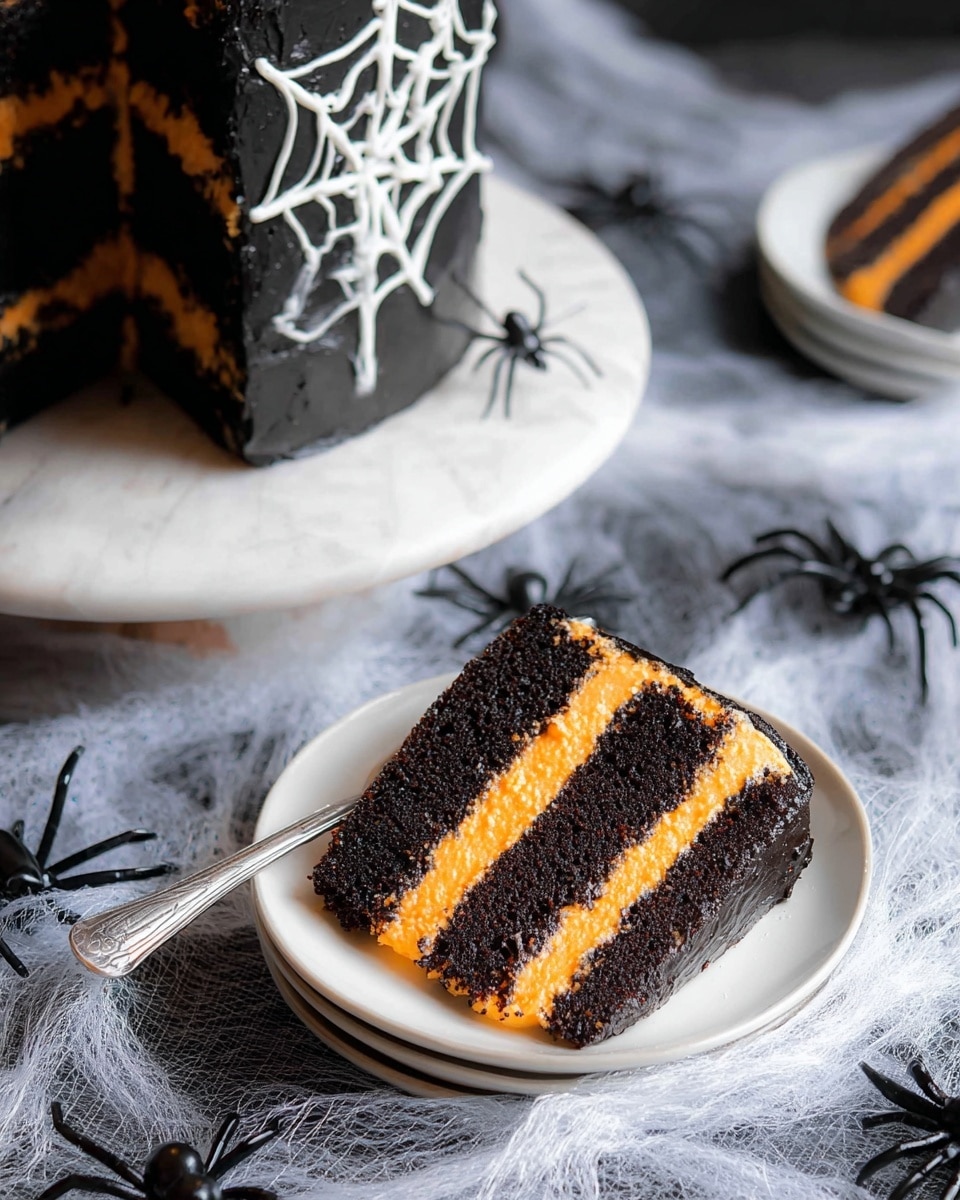
Garnishes
I love keeping the garnish simple so the spiderweb art is the star. A light dusting of edible glitter or a few plastic spiders (just use candy-friendly ones!) add fun flair without overpowering the taste or design.
Side Dishes
Pair this cake with a scoop of vanilla bean ice cream or a dollop of lightly sweetened whipped cream to balance the rich chocolate and citrus flavors. A hot cup of black tea or coffee also complements the dessert perfectly.
Creative Ways to Present
For Halloween parties, I’ve served slices on black plates with miniature pumpkin decorations or placed edible “spider legs” made from chocolate sticks beside each piece. Another time, I piped additional small spiderwebs on cupcakes to match the cake as a full spooky dessert table.
Make Ahead and Storage
Storing Leftovers
I recommend keeping leftover Spiderweb Cake refrigerated in an airtight container. I usually cover mine with plastic wrap to prevent the frosting from drying out. It keeps well for about 3-4 days without losing moisture or flavor, but bring slices to room temperature before serving for best taste.
Freezing
Freezing works great if you want to make this ahead for a party. Wrap individual slices tightly in plastic wrap and then foil, or freeze the whole cake covered in plastic wrap and then foil. Thaw in the fridge overnight, then let it come to room temp before serving. Just a heads-up: the frosting can sometimes lose a bit of its smooth texture, but the flavor stays excellent.
Reheating
Since this is a cake best enjoyed cool or at room temperature, reheating isn’t usually necessary. However, if you want to warm a slice slightly, pop it in the microwave for 10 seconds or so. That little warmth brings out the chocolate notes nicely but don’t overdo it or the frosting might melt.
FAQs
-
Can I make the Spiderweb Cake Recipe without coffee?
Absolutely! If you’re not a coffee fan, you can substitute the hot brewed coffee with hot water. The coffee enhances the cocoa flavor, but water keeps the cake moist and the chocolate taste still shines through.
-
How do I get the frosting to be that bright orange color?
I highly recommend using Electric Orange Americolor Gel Color for a vivid, consistent orange. Mixing just a little into your buttercream creates that striking color without watering down your frosting like some liquid food colorings might.
-
What’s the best way to create the spiderweb design?
Pipe concentric circles of dark frosting on top of your frosted cake, then drag a toothpick or skewer from the center out toward the edges. Doing this quickly and confidently ensures clean, sharp lines. Practice on parchment paper if you need to build confidence.
-
Can I prepare this cake ahead of time?
Yes! You can bake the cake layers a day ahead and store them wrapped tightly in the fridge. Prepare the frosting the same day or a few hours before assembly to keep it fresh. The assembled cake also keeps well when refrigerated for up to 3 days.
Final Thoughts
This Spiderweb Cake Recipe holds a special place in my kitchen, especially around Halloween when my family gathers and the vibe calls for something festive and a little spooky. Beyond its impressive looks, it’s just a genuinely delicious chocolate cake with a bright buttery punch of orange that everyone loves. I’m confident you’ll find this cake not only friend-worthy but also a dependable showstopper that’s easier to make than it looks. So go ahead—give this one a try and impress your friends with a little spiderweb magic on your next dessert table!
Print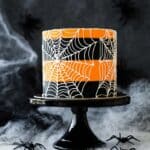
Spiderweb Cake Recipe
- Prep Time: 180 min
- Cook Time: 35 min
- Total Time: 215 min
- Yield: 12 servings
- Category: Dessert
- Method: Baking
- Cuisine: American
Description
The Spiderweb Cake is a decadent Halloween-themed dessert featuring a rich black cocoa chocolate cake paired with a vibrant orange-flavored buttercream frosting. This cake combines deep chocolate flavors with the subtle citrus note of orange extract in the frosting, making it a festive and visually stunning treat perfect for spooky celebrations or any chocolate lover’s gathering.
Ingredients
For the Cake:
- 1 1/2 cups all-purpose flour
- 1 1/2 cups granulated sugar
- 1/2 cup black cocoa powder
- 1/4 cup Dutch-processed cocoa powder (sifted)
- 1 1/2 tsp baking soda
- 1 tsp baking powder
- 1 tsp salt
- 1/4 cup vegetable oil
- 3/4 cup buttermilk
- 3/4 cup strong brewed coffee (or water) (hot)
- 2 large eggs
- 2 tsp vanilla extract
For the Orange Buttercream Frosting:
- 1 cup unsalted butter (room temperature)
- 2 1/2 cups powdered sugar (adjust to taste)
- 1 Tbsp heavy whipping cream
- 1/4 tsp orange extract
- 1/2 tsp Electric Orange Americolor Gel Color (optional*)
For the Spiderweb Icing:
- 1/2 cup shortening
- 2 cups powdered sugar
- 1 tsp clear vanilla extract (optional, do not use regular vanilla to avoid brown tint)
- 3 Tbsp milk (as needed to thin frosting)
Instructions
- Prepare the Cake Batter: In a large mixing bowl, sift together the all-purpose flour, granulated sugar, black cocoa powder, sifted Dutch-processed cocoa powder, baking soda, baking powder, and salt. In a separate bowl, combine the vegetable oil, buttermilk, hot brewed coffee (or hot water), eggs, and vanilla extract. Gradually add the wet ingredients to the dry ingredients and mix until just combined, making sure not to overmix to maintain a tender crumb.
- Bake the Cake: Preheat your oven to 350°F (175°C). Grease and flour your cake pans or line them with parchment paper. Divide the batter evenly among the pans and bake for approximately 30-35 minutes, or until a toothpick inserted into the center comes out clean. Once baked, remove from the oven and allow the cakes to cool completely on a wire rack before frosting.
- Make the Orange Buttercream Frosting: In a medium bowl, beat the room temperature unsalted butter until creamy and smooth. Gradually add the powdered sugar, beating continuously to avoid lumps. Add the heavy whipping cream, orange extract, and electric orange gel color (if using), and continue to beat until the frosting is light and fluffy. Adjust consistency with more powdered sugar or cream if necessary.
- Prepare the Spiderweb Icing: In a separate bowl, cream the shortening until smooth. Gradually add powdered sugar and beat until fully incorporated. Add the clear vanilla extract, then slowly add milk, one tablespoon at a time, until the consistency is smooth yet thick enough to pipe clearly for creating the spiderweb design.
- Assemble the Cake: Place one layer of the cooled cake on your serving plate. Spread a layer of orange buttercream frosting evenly over the top. Repeat layering with remaining cake layers and frosting, then finish by frosting the outside of the entire cake with the orange buttercream.
- Create the Spiderweb Design: Using the prepared spiderweb icing, pipe concentric circles starting from the center of the cake outward. Then, with a toothpick or skewer, drag lines from the center to the edges of the cake to create a spiderweb effect. Chill the cake briefly to set the design if desired before serving.
Notes
- This Spiderweb Cake is perfect for Halloween celebrations and makes for an impressive centerpiece dessert.
- The black cocoa powder gives the cake its rich, dark color and intense chocolate flavor—do not substitute with regular cocoa powder.
- The orange-flavored buttercream complements the deep chocolate taste with a refreshing citrus twist.
- Using clear vanilla extract in the spiderweb icing is important to maintain the bright white color of the design.
- The Electric Orange Americolor Gel Color is optional but adds vibrant, festive orange color to the frosting.
- Allow adequate cooling time for the cake before frosting to prevent melting and ensure a clean design.
Nutrition
- Serving Size: 1 slice (1/12 of cake)
- Calories: 620 kcal
- Sugar: 70 g
- Sodium: 384 mg
- Fat: 31 g
- Saturated Fat: 16 g
- Unsaturated Fat: 15 g
- Trans Fat: 0 g
- Carbohydrates: 86 g
- Fiber: 2 g
- Protein: 4 g
- Cholesterol: 75 mg

